Witnessing the events of the last few weeks during the partial government shutdown in the U.S. and listening to the stories of so many who were affected by it has me thinking about something I call financial triage.
When I meet or talk on the phone with someone who is experiencing a financial crisis, such as the loss of a job or spiraling debt, I try to bring the focus toward immediate next steps that can help bring relief. It is not until after this crisis is addressed that we can move on to bigger picture goals. The first thing to do is to recognize that you are not alone in your experience and that there are steps you can take to make things better day by day.
It has been heartening to see the outpouring of support for federal workers who were furloughed or working without pay during the recent shutdown. Sadly, not everyone who comes upon hard times is able to tap into the same sorts of resources. This includes small business owners and service workers who do not work for the government but were negatively effected by the lack of business during the weeks of shutdown.
Financial Triage has three main components: assessment, inventory, prioritization. We take stock of where things stand, compile a list or picture of what we have to work with and then develop a system for handling issues from the most pressing immediate needs to the smaller tasks that can be dealt with later.
Assessment: How bad is the situation? What are the immediate financial impacts? What are the possible future implications of what is happing now? What are some unlikely potential results?
Example: You have been laid off from work. Your immediate concerns include paying your bills and getting a new job. Possible implications range from being rejected repeatedly to landing a dream job that is better than the one you just got laid off from. It is unlikely that you will remain unemployed forever.
Inventory: What are the resources available to help you with this situation? Do you have savings? Access to credit? Ability to cut expenses? Who in your personal and professional network can you call on to help with different aspects of your current situation?
Example: You received your final paycheck and it included extra payout for unused time off. Along with this, you have enough in savings to pay rent and bills for the next three months if you are super careful about spending. You make a list of everyone in your network who might be helpful in your search for a new job. You also make a list of new things to add to your resume based on the job that laid you off.
Prioritize: Divide your list of to-do’s into things that must be dealt with now, soon and later.
Example: Things to do right now: Stop all non-essential spending, file for unemployment benefits and prepare your resume. Things to do soon: Tap into your personal and professional networks to find out about possible job openings, secure solid references and gain any tips for making your next move. Things to do later: Create a plan for improving your emergency savings and adding to your marketable skills once you land a new job and are financial and mentally able to focus on the future.
No matter what your personal financial crisis is, there are ways to tackle the problem. Often the first steps include: taking a deep breath, taking stock of where you are at, clarifying possible options, and focusing on what is most important. Although it can be difficult, reaching out for help and guidance can help dispel some of the stress and loneliness that surrounds financial hardship.
Jennipher Lommen is a Certified Financial Planner TM and Enrolled Agent who offers comprehensive financial planning and tax advice to clients in Santa Cruz, CA and beyond.







